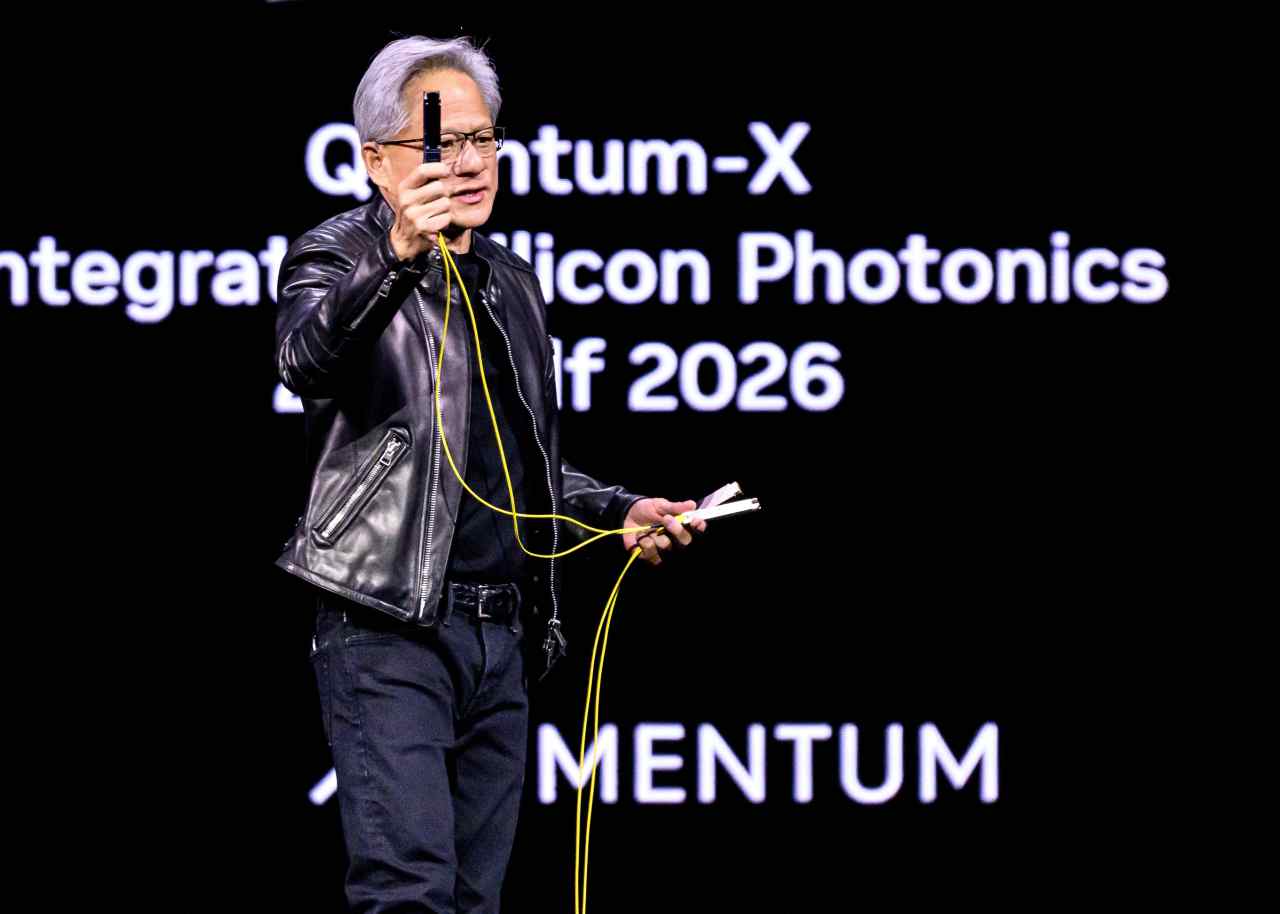Vitalik Buterin’s vision for Ethereum: Pectra, Glamsterdam and beyond
Why do Ethereum upgrades matter? Ethereum upgrades are essential to scale, secure and evolve the network without compromising its decentralized foundation.Ethereum still stands as the heavyweight of smart contract platforms, but staying on top means relentless reinvention. Every upgrade isn’t just a technical tweak; it’s a high-stakes move to crack the toughest problems in crypto: clogged scalability, soaring gas fees, clunky onboarding and the constant creep of centralization.In a race where rivals are slashing transaction times and polishing user experiences, standing still isn’t an option. To hold its ground at the center of decentralized finance (DeFi), non-fungible tokens (NFTs) and Web3 as a whole, Ethereum must keep sharpening both its execution and consensus engines.The Ethereum development roadmap — from the upcoming Pectra upgrade to Fusaka and the Glamsterdam Ethereum update — is more than a technical checklist. It’s a balancing act: scaling to meet global demand while fiercely defending the decentralized ideals it was built on. In many ways, these upgrades aren’t just upgrades — they’re Ethereum’s ultimate stress test for the future.Did you know? Since 2015, Ethereum has completed 16 major upgrades — from the historic shift to proof-of-stake (PoS) in the Merge (2022) to early sharding steps with Altair (2021). Vitalik Buterin’s new focus for Ethereum Vitalik Buterin’s Ethereum vision has shifted entirely to long-term research, opening new frontiers in scalability, privacy and decentralization.In 2024, a leadership shakeup at the Ethereum Foundation opened a new chapter. Vitalik Buterin stepped away from day-to-day operations and returned to his core strength: charting Ethereum’s deepest future. Now free from managerial duties, Buterin is diving into the hard problems: scaling Ethereum for billions, embedding privacy at the protocol level and protecting decentralization in a rapidly centralizing world.Buterin’s major research areas include:Ethereum scalability roadmap: Exploring new execution models to make Ethereum faster and cheaper without sacrificing security.Privacy enhancements: Developing native features like stealth addresses and private transactions to protect users by default.Consensus and execution redesign: Rethinking how nodes validate and process transactions to prepare for an ultra-scalable, decentralized Ethereum.Buterin outlines a vision for an ecosystem that remains open, trustless and adaptable to a much larger, more complex global landscape.Did you know? Vitalik first proposed Ethereum in 2013 — when he was just 19 years old — after feeling Bitcoin needed a more programmable architecture. From Merge to Splurge: Ethereum’s six-phase vision Ethereum’s evolution is structured across six conceptual phases — each solving a different foundational challenge in blockchain design.The Merge: Replaced proof-of-work (PoW) with PoS, setting the stage for long-term sustainability and validator-based security.The Surge: Focuses on scaling the network through rollups, data availability, like Ethereum Improvement Proposal (EIP) 4844, and technologies like PeerDAS (peer data availability sampling) — targeting 100,000 transactions per second.The Scourge: Aims to neutralize miner/maximal extractable value (MEV) and decentralize staking, exploring tools like inclusion lists and enshrined proposer-builder separation (ePBS).The Verge: Introduces Verkle Trees and SNARK-based light clients, making Ethereum state access radically more efficient and enabling stateless block verification.The Purge: Simplifies the protocol by pruning historical data (via EIP-4444), eliminating technical debt and reducing node hardware requirements.The Splurge: A catch-all for everything else, from Ethereum Object Format (EOF) to deep cryptography experiments, polishing Ethereum’s architecture with long-term improvements. The Ethereum Pectra upgrade, explained The Ethereum Pectra upgrade, expected in May 2025, merges two prior upgrade tracks and sets a technical foundation for Ethereum’s next decade.Pectra merges two parallel upgrade tracks: Prague (execution layer) and Electra (consensus layer), bringing over a dozen EIPs into a single milestone release. It lays the groundwork for Ethereum’s next phase — safer smart contracts, more powerful wallets and a smoother staking experience.Key EIPs and features:EIP-2537: BLS12-381 precompiles — crucial for zero-knowledge rollups and cryptographic proofs.EIP-7002: Triggerable exits — allowing validators to withdraw via execution layer triggers.EIP-7702: Account abstraction — letting externally owned accounts (EOAs) act more like smart contracts.EIP-7840: Blob s



Why do Ethereum upgrades matter?
Ethereum upgrades are essential to scale, secure and evolve the network without compromising its decentralized foundation.
Ethereum still stands as the heavyweight of smart contract platforms, but staying on top means relentless reinvention. Every upgrade isn’t just a technical tweak; it’s a high-stakes move to crack the toughest problems in crypto: clogged scalability, soaring gas fees, clunky onboarding and the constant creep of centralization.
In a race where rivals are slashing transaction times and polishing user experiences, standing still isn’t an option. To hold its ground at the center of decentralized finance (DeFi), non-fungible tokens (NFTs) and Web3 as a whole, Ethereum must keep sharpening both its execution and consensus engines.
The Ethereum development roadmap — from the upcoming Pectra upgrade to Fusaka and the Glamsterdam Ethereum update — is more than a technical checklist. It’s a balancing act: scaling to meet global demand while fiercely defending the decentralized ideals it was built on. In many ways, these upgrades aren’t just upgrades — they’re Ethereum’s ultimate stress test for the future.
Did you know? Since 2015, Ethereum has completed 16 major upgrades — from the historic shift to proof-of-stake (PoS) in the Merge (2022) to early sharding steps with Altair (2021).
Vitalik Buterin’s new focus for Ethereum
Vitalik Buterin’s Ethereum vision has shifted entirely to long-term research, opening new frontiers in scalability, privacy and decentralization.
In 2024, a leadership shakeup at the Ethereum Foundation opened a new chapter. Vitalik Buterin stepped away from day-to-day operations and returned to his core strength: charting Ethereum’s deepest future. Now free from managerial duties, Buterin is diving into the hard problems: scaling Ethereum for billions, embedding privacy at the protocol level and protecting decentralization in a rapidly centralizing world.
Buterin’s major research areas include:
- Ethereum scalability roadmap: Exploring new execution models to make Ethereum faster and cheaper without sacrificing security.
- Privacy enhancements: Developing native features like stealth addresses and private transactions to protect users by default.
- Consensus and execution redesign: Rethinking how nodes validate and process transactions to prepare for an ultra-scalable, decentralized Ethereum.
Buterin outlines a vision for an ecosystem that remains open, trustless and adaptable to a much larger, more complex global landscape.
Did you know? Vitalik first proposed Ethereum in 2013 — when he was just 19 years old — after feeling Bitcoin needed a more programmable architecture.
From Merge to Splurge: Ethereum’s six-phase vision
Ethereum’s evolution is structured across six conceptual phases — each solving a different foundational challenge in blockchain design.
- The Merge: Replaced proof-of-work (PoW) with PoS, setting the stage for long-term sustainability and validator-based security.
- The Surge: Focuses on scaling the network through rollups, data availability, like Ethereum Improvement Proposal (EIP) 4844, and technologies like PeerDAS (peer data availability sampling) — targeting 100,000 transactions per second.
- The Scourge: Aims to neutralize miner/maximal extractable value (MEV) and decentralize staking, exploring tools like inclusion lists and enshrined proposer-builder separation (ePBS).
- The Verge: Introduces Verkle Trees and SNARK-based light clients, making Ethereum state access radically more efficient and enabling stateless block verification.
- The Purge: Simplifies the protocol by pruning historical data (via EIP-4444), eliminating technical debt and reducing node hardware requirements.
- The Splurge: A catch-all for everything else, from Ethereum Object Format (EOF) to deep cryptography experiments, polishing Ethereum’s architecture with long-term improvements.

The Ethereum Pectra upgrade, explained
The Ethereum Pectra upgrade, expected in May 2025, merges two prior upgrade tracks and sets a technical foundation for Ethereum’s next decade.
Pectra merges two parallel upgrade tracks: Prague (execution layer) and Electra (consensus layer), bringing over a dozen EIPs into a single milestone release. It lays the groundwork for Ethereum’s next phase — safer smart contracts, more powerful wallets and a smoother staking experience.
Key EIPs and features:
- EIP-2537: BLS12-381 precompiles — crucial for zero-knowledge rollups and cryptographic proofs.
- EIP-7002: Triggerable exits — allowing validators to withdraw via execution layer triggers.
- EIP-7702: Account abstraction — letting externally owned accounts (EOAs) act more like smart contracts.
- EIP-7840: Blob schedule — preparing for increased data throughput and rollup scaling.
- EIP-6110, EIP-7685, EIP-7549, among others: Further execution and consensus refinements.
These changes collectively introduce the EOF, a modular contract structure that simplifies audits and brings native account abstraction closer to reality, enabling smart accounts, gasless transactions and better UX for mainstream adoption.

The Pectra Ethereum release date is officially scheduled for May 2025, though rollout could adjust based on final testnet outcomes.
Did you know? At peak times, Ethereum has handled over 1 million transactions in a single day — and future upgrades aim to multiply that capacity.
What comes after Pectra: Fusaka and Glamsterdam
Fusaka and Glamsterdam represent the next phases in the Ethereum development roadmap, bringing scalability and efficiency improvements needed for mass adoption.
Following Pectra, the Ethereum roadmap 2025 continues with two ambitious upgrades:
- Fusaka (Osaka-Fulu): Introduces PeerDAS, a breakthrough that will allow Ethereum to handle massive amounts of data without bloating the blockchain. By sampling small pieces of data instead of downloading full blocks, Fusaka will enable much lighter nodes and higher transaction throughput.
- Glamsterdam (Amsterdam–G-Star): Still in its early design stages, the Glamsterdam Ethereum update focuses on gas optimizations and protocol-level efficiency improvements. It’s essentially about making Ethereum faster and cheaper to use, especially for complex applications like layer-2 rollups and zero-knowledge (ZK) technology.
While Fusaka directly tackles scaling, Glamsterdam ensures the network can operate efficiently under heavier loads without compromising decentralization. Together, they mark Ethereum’s transition from early layer-2 scaling experiments to a full-fledged, high-throughput, global settlement layer.

Buterin’s research directions beyond the upgrade roadmap
Buterin’s crypto future vision pushes Ethereum into experimental territory, exploring radical new architectures for execution, consensus and privacy.
Outside of the immediate upgrade timeline, Vitalik’s research is tackling larger structural questions:
- Post-EVM architecture: Considering modular virtual machines like RISC-V to replace or evolve the Ethereum Virtual Machine (EVM), improving performance and flexibility.
- Decentralized scaling: Deepening Ethereum’s layer-2 future with advances in rollup-centric scaling and light client verification.
- Crypto future plans 2025: Exploring the balance between innovation and decentralization in an environment of increasing regulatory pressure and technological complexity.
These research threads could shape Ethereum’s next-generation upgrades beyond Glamsterdam — redefining what a decentralized smart contract platform can become before 2030.
Did you know? Buterin’s latest research explores RISC-V, an open hardware standard, as a potential future replacement for the EVM to make Ethereum more modular and globally verifiable.
Ethereum’s next phase: Scaling globally while defending decentralization
Ethereum’s next phase is about defending decentralization while scaling to global usage, a balance that few other chains have achieved.
The Ethereum consensus upgrades coming through Pectra, Fusaka and Glamsterdam are critical for a few reasons:
- Global usability: Lower fees and faster confirmation times are essential for Ethereum to serve millions of users across DeFi, NFTs, gaming and new industries.
- Layer-2 synergy: A more scalable layer 1 makes layer-2 rollups cheaper, faster and more secure, fueling Ethereum’s ecosystem growth.
- Long-term resilience: Upgrading the execution layer, consensus and privacy protections now ensures Ethereum remains resistant to centralization pressures in the future.
Ultimately, the Ethereum scalability roadmap isn’t just about bigger numbers — it’s about protecting what makes Ethereum different in a world moving toward centralized alternatives.
So, what should you keep an eye out for?
Buterin’s vision for Ethereum points to a future of radical flexibility, deeper privacy and unstoppable decentralization.
With the Pectra Ethereum release date approaching (scheduled for May 7) and the Glamsterdam Ethereum update on the horizon, Ethereum’s innovation engine is running at full speed. As Buterin’s crypto future vision unfolds, the Ethereum blockchain is not just preparing to survive the next wave of competition — it’s positioning to thrive.
The journey from the Merge to a fully modular, massively scalable network is only just beginning.
What's Your Reaction?










































































































